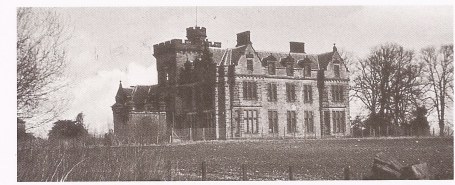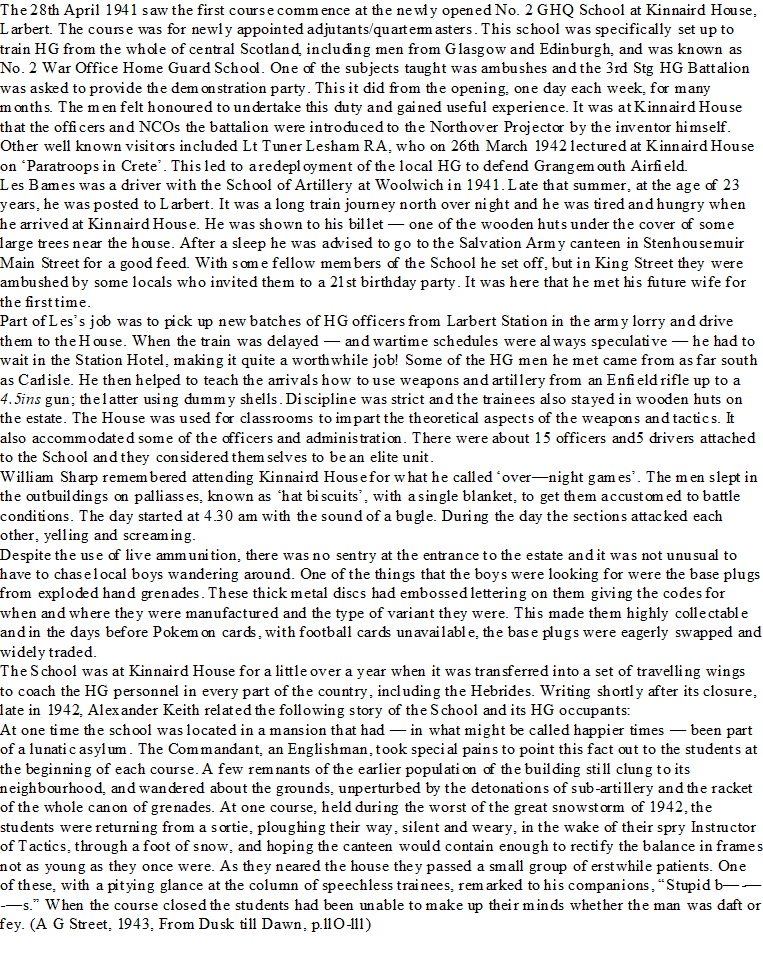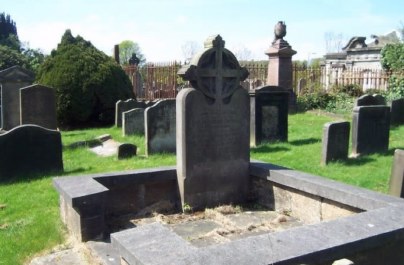KINNAIRD HOUSE
History of Kinnaird House, Larbert, Stirlingshire, Scotland.
If you have any information or pictures that you could contribute to this web site, please send it to:
Contact:
Book extracts
The following extract taken from "Hard as Nails" by Geoff B Bailey pg169-171


------------------------------------
 The grave of Robert Bruce by Ian Scott, Falkirk Herald
The grave of Robert Bruce by Ian Scott, Falkirk Herald Email published 21 April 2017
There is a street in Larbert called Robert Bruce Court and it’s a fair bet that many people believe that it is a salute to the great King of Scots who triumphed at Bannockburn in 1314.
The truth is very different and takes us back to another turbulent period in Scotland’s history when the battle for religious power was at its height following the Reformation of 1560.
Robert Bruce of Kinnaird was born in Airth Castle to aristocratic family with ties back to ‘the Bruce’, and was destined for a career in the law. While studying at St Andrews University he came under the influence of John Knox himself and after years of wrestling with his conscience turned his mind to the church. He discovered in himself a great power as a preacher and was soon attracting attention in the court of King James V1.
Bruce’s high family connections and legal training made him a powerful ally for the young King and he was soon one of the inner circle that shaped religious and political events. He was appointed to Knox’s old pulpit of St Giles and was more or less in charge of Scotland while James was in Denmark to collect his new wife.But all was not well between the two. Bruce was suspicious of the King’s changing theology and James for his part thought his former friend might become a rival: “Master Robert Bruce I am sure intends to be King and declare himself heir to Robert the Bruce”.
The big fall out came in 1600 when the King ordered all Ministers in Edinburgh to condemn the Gowrie brothers as traitors from their pulpits. Without proof Bruce refused and as a punishment he was banned from preaching and then exiled from Scotland. He was allowed to return home though banished to Inverness.
Finally he was confined to his home at Kinnaird and not allowed to travel more that two miles from there.
At this time the old church at Larbert Cross was in ruins with services in the parish taking place at Dunipace which was then joined to Larbert. Robert Bruce tells us that he and others decided to restore both church and services: “Captain William Bruce and Master Livingstone began it and I came the third restoring the walls and pulpit”.
From then on every Sunday he preached with great power against the changes to religious practice ordered from London by James and his son Charles 1. Thousands came to the village to hear him and he soon became one of the key figures in the evolving Scottish covenanting tradition.
He died at Kinnaird House in July 1631 and 4000 people came to his funeral, an astonishing number given the size of the population at the time.
His gravestone is inscribed CHRISTUS IN VITA ET IN MORTE LUCRUM or ‘Christ is my advantage in life and death’. It now stands inside the church and his grave in the churchyard has a later inscription which says that he was buried below the pulpit of the old church.
The Kinnaird House of Bruce’s time was replaced in the 1700s and that building was itself demolished and a new house built in the late 19th century.
The intensity of Robert Bruce’s religious conviction may be a bit strong for our modern taste but there can be no doubt that he was a man of high principle who lost everything to defend what he believed in. He was also one of the most famous men in Scotland once described by the King as “worth half the kingdom”.
Read more at: http://www.falkirkherald.co.uk/lifestyle/nostalgia/robert-bruce-worth-half-the-kingdom-1-4425584.
Houses were built for the miners and included the Red Row at the village of Carronhall and nearer to Kinnaird on the "Longdyke", there was the "Red Houses" and the "Square of Houses". As late as 1871, there was the village of "Old Engine", on the north side of the Bellsdyke Road close to the eastern entrance to Kinnaird Estate. This was the site of the "Engine Pit", used for many years to pump water from the Kinnaird coalfield. Some of the miners lived at Back 0' Dykes and at Bensfield, the latter at that time was a small "steading" to the east of the present day farmhouse of that name [which today stands opposite the site of Back 0' Dykes]. Another village complete with a school was established near to Cuttyfield Farm and given the name "Kinnaird"; it was built by James Bruce. In Carronshore itself, the Bothy Row was home to many miners. Both villages at Carronhall and Kinnaird had their own friendly societies, early forms of insurance schemes. These operated independently from the main "Carron Founders Friendly Society” at the Works, as Carron Company had refused the miners entry to it, believing that it would encourage absenteeism at the pits. THE CARRON COLLIERIES
extracted from
Where Iron Runs Like Water!
A New History of Carron Iron Works 1759-1982
by Brian Watters
Immediately to the east of the Kinnaird mansion – a house built to be lived in, not looked at – we have one of the prettiest objects on this old estate, in the form of a magnificent arcade of lime trees. Within the garden there are also two planes of gigantic dimensions, growing side by side, with a rustic seat between, which were planted by Bruce, the preacher, and his wife in commemoration of their marriage. It was here where the distinguished divine passed away, without pain or sickness, in August, 1631, aged seventy-seven years. When his sight failed him, he called for the family Bible, and asked his finger to be placed on Romans viii, 28, and told those present that he died in the faith of what was there contained.
It was within this house, too, that Bruce, of Abyssinian fame, met with the fatal fall. The trophies which he brought with him from abroad are here carefully preserved, and form an interesting little museum. There are among other memorials of the exploratory tour, a cloak and cap – hemp-woven, and clad with feathers of scarlet and black – which were presented to the traveller by the chief who murdered Captain Cook; a petrified impression of a horse’s knee-joint, wonderfully distinct; a phial of water from the "fountain" of the Nile; a numerous assortment of reptiles in bottles; the clock, carried by Bruce over his rambles, which has a pendulum of triangular devices’ a great old astronomical quadrant of brass, of two or three feet radius, a camel’s load of itself; some rifles, Turkish sabres, and other arms from the Levant; helmets from Otaheiti; various fragments of Egyptian antiquities; a number of small antique bronzes, and Greek and Roman coins collected by Bruce in the countries which border the Mediterranean. The works contained in the portfolios consisted of architectural drawings of the Roman triumphal arch at Tripoli, and of aqueducts and other ancient buildings, near the site of Carthage, on the north-east coast of Africa, and unpublished botanical drawings of Abyssinian plants; and likewise a host of other odds and ends, all interesting, more or less, from certain associative stories of their own. But there was also an Ethiopic version, from the Greek, of the Book of Enoch, which the traveller placed in the hands of his countrymen by his Abyssinian expedition. These prophecies of Enoch and Noah, were well known to the early fathers of the church, although they had been entirely lost sight of during the middle ages. The work, however, is generally considered apocryphal, and no doubt belongs to a period prior to that of the Christian era. The traveller had the panels of the base of the bookcase ornamented with figures, painted in the style of the Herculaneum fresco figures, by David Allan of Edinburgh, an eminent artist of that time.
Bruce was a keen sportsman, and used to go in the season to a place thirty miles off in the Highlands, on Loch Lubnaig, called Ard Whillary, the shooting and fishing belonging to which he rented. In an enclosure of a few acres at Kinnaird, he had some fallow deer, and would show his skill as a marksman, by bringing down a fat buck with his rifle, when he intended to give a venison feast. He had a pair of swans to ornament his pond, and the neighbours said he was wont to pass off his geese for swans too.
At Kinnaird, we are on the threshold of a vast coal seam. And connected with pit No. 10 is an old engine which was erected in 1786, by Symington, for Bruce, the traveller. Although now groaning sadly under the pressure of years, the huge machine, as a pumper, has still few equals in Scotland. Previous to 1775, all the hewers and coal-bearers connected with our colleries, were held in bondage as serfs, and were actually transferable with the pits to which they were attached. Nor did the Emancipatory Act of the year mentioned do more than set them nominally free.
extracted from The History of Stirlingshire
Chapter XVIII. Kinnaird and Dunmore